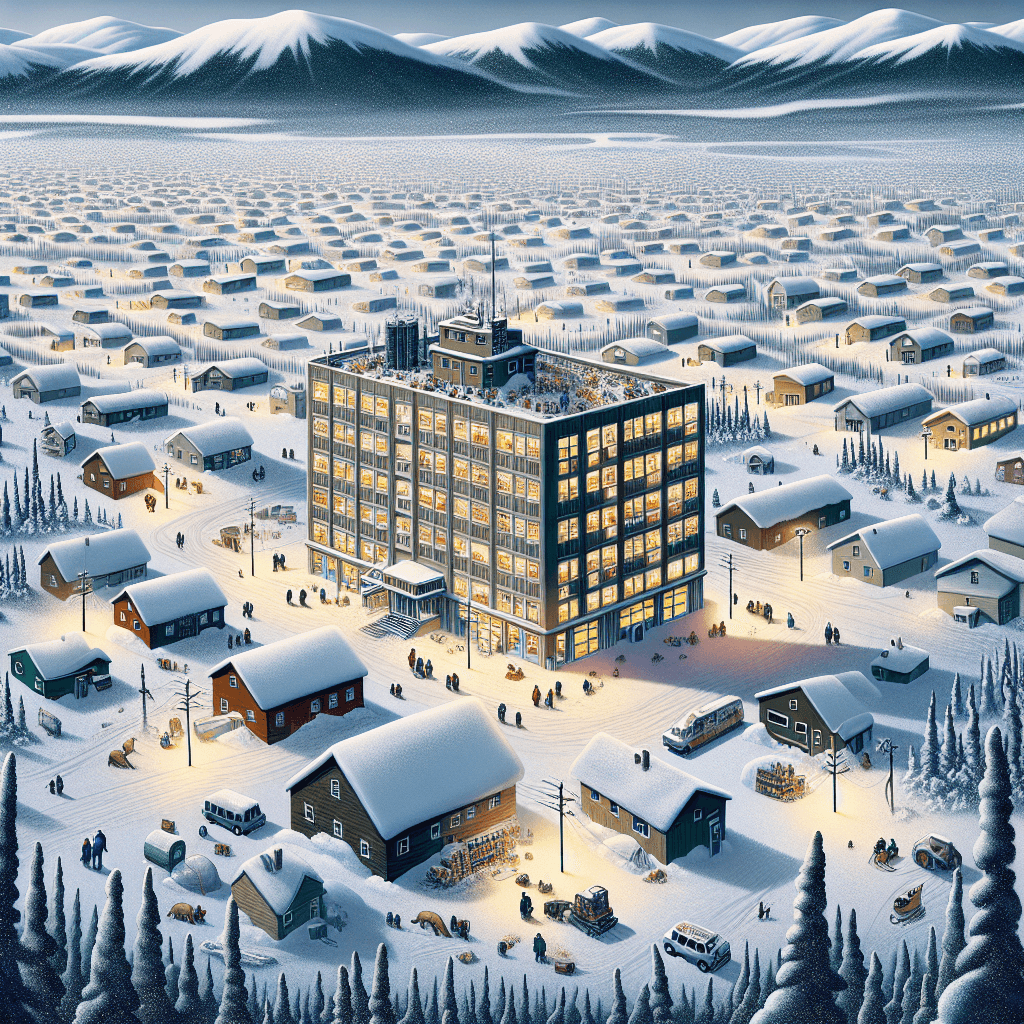Why does an entire Alaskan town live together inside one single building
In a remote Alaskan town, nearly 300 residents live, work, and go to school under a single roof, not for convenience, but for sheer survival.


Too Long; Didn't Read
TLDR: The entire Alaskan town of Whittier lives in a single high-rise, a former Cold War army barracks, because it is safer and more convenient. Extreme weather and geographic isolation make it practical to have the school, post office, store, and homes all under one roof.
The City Under One Roof: Why Does an Entire Alaskan Town Live Together Inside One Single Building?
Imagine your entire town—the post office, the grocery store, the police station, the clinic, and nearly all your neighbors—being just an elevator ride away. For the residents of Whittier, Alaska, this isn't a futuristic fantasy; it's everyday reality. Nestled on the edge of the stunning Prince William Sound, this remote community is famous for one peculiar fact: the vast majority of its roughly 200 residents live in a single, 14-story building called Begich Towers. This unique living arrangement often sparks curiosity, but it’s not a social experiment. It’s a practical solution born from a unique combination of military history, extreme weather, and geographic isolation. This post will explore the fascinating reasons behind America’s most condensed community.
A Cold War Legacy
To understand Whittier, you must first look to its past. The town wasn't founded by pioneers seeking gold but by the U.S. Army during World War II. Its strategic, ice-free port made it an ideal, and secret, military logistics base called Camp Sullivan. The true foundation for its current vertical living, however, was laid during the Cold War.
In the 1950s, the U.S. Army Corps of Engineers constructed two large buildings to house personnel. The Buckner Building, now abandoned, was a massive complex. The other, then called the Hodge Building, is what we now know as Begich Towers. Designed to be a "city under one roof," it was a self-contained barracks complete with all necessary services. When the military largely pulled out in the 1960s, the building was converted into a public condominium, and the civilian population moved in, inheriting a ready-made solution for life in a harsh environment.
Battling the Extreme Alaskan Elements
The primary reason Whittier’s residents remain in one building is the weather. The town’s location makes it a magnet for some of Alaska's most severe conditions.
- Incessant Wind: Whittier is notorious for its powerful winds, which can frequently gust over 60 miles per hour and have been recorded well over 100 mph. These winds can make walking outside dangerous and unpleasant.
- Heavy Snowfall: The town receives an average of 250 inches—over 20 feet—of snow annually. This immense snowfall can make travel difficult and isolate homes.
- Constant Cloud Cover: Whittier is one of the cloudiest places in North America, with persistent rain and overcast skies.
Living together in Begich Towers minimizes exposure to these unforgiving elements. A trip to the post office or the corner store doesn't require bundling up to face a blizzard; it just requires a walk down the hall. The local school is even connected to the building via an underground tunnel, ensuring children can get to their classes safely, no matter the weather.
Life in a Vertical Town
Begich Towers is more than just an apartment block; it’s the heart of the community. Inside its walls, you can find nearly every essential service a small town needs:
- The Post Office
- A general store
- A health clinic
- The Whittier Police Department
- City government offices
- A church
- A laundromat
- A small bed & breakfast
This vertical integration fosters a tight-knit community where everyone knows their neighbors. While some might find the proximity challenging, for residents of Whittier, it's a system that provides security, convenience, and a deep sense of shared experience in one of the most isolated places on the continent, accessible only by sea or a 2.5-mile, one-lane tunnel shared by cars and trains.
A Testament to Adaptation
The story of Whittier and Begich Towers is a compelling example of human adaptation. What began as a military necessity has evolved into a practical and enduring way of life for a small but resilient community. The concentration of life within a single building is a direct and logical response to the town’s Cold War origins, its formidable weather, and its profound isolation. It stands not just as a curiosity for tourists, but as a monument to the ingenuity required to build a community and thrive against the incredible power of the Alaskan wilderness. It reminds us that sometimes, the most unusual solutions are the most effective.
More Articles

Why is it safe to eat the mold in blue cheese but not on bread?
One mold is a carefully cultivated delicacy, while its cousin on your bread is growing dangerous, invisible toxins—we'll break down the crucial difference.

Why does fresh pineapple prevent gelatin desserts from becoming solid?
It's not a kitchen mistake; it's a case of culinary sabotage at the molecular level. Discover the powerful, protein-devouring enzyme in fresh pineapple that's actively digesting your dessert before it can even set.

Why are some ships deliberately fitted with metal blocks that are designed to be destroyed?
It sounds like madness, but these humble metal blocks are designed with a single, vital mission: to sacrifice themselves to the sea, preventing the ship's massive hull from being eaten alive.